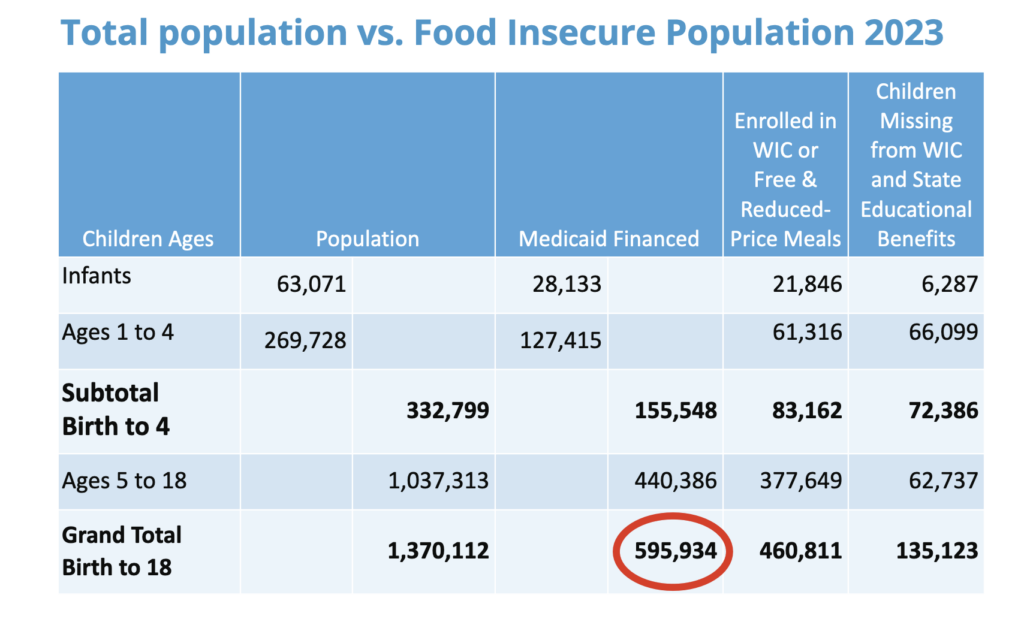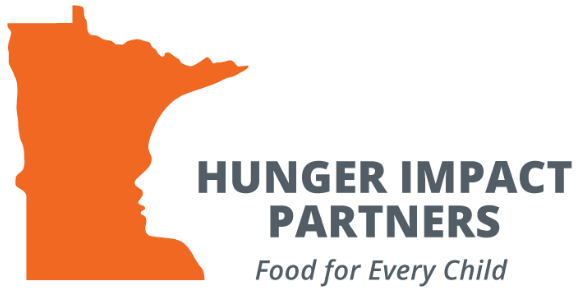By the Numbers
We continue to reduce poverty, strengthen early childhood and student nutrition, and boost children’s health and development in everything we do for the nearly 600,000 struggling kids.
We know exactly where the hungry kids are, and we go to them.
In 2023, 17.3 percent of households with children in the United States experienced food insecurity, which is an increase of 40 percent from 2021.
Our proprietary Child Nutrition Index has allowed us to isolate populations in Minnesota according to meal program, location, poverty level and Medicaid enrollment.
Based on this data, we calculate participation rates, numbers of missing meals and potential reimbursement. We then convert them to opportunities by collaborating with communities to execute plans for filling site-specific meal gaps on a sustainable basis.

How did we arrive at our figures?
We use Medicaid financed to determine how many children are eligible for federal nutrition programs.
What we learned during the pandemic is that school nutrition departments went the extra mile to address food insecurity needs in their community at the onset of COVID-19 and found ways to make those efforts sustainable as the pandemic continued.
As the pandemic continued, meal participation increased due to alternative meal distribution methods, more flexibility in administration due to waivers and meal bundling of multi-day meal boxes.
Child Nutrition Index Sources
Medicaid Financed: CMS-16 Reports. About the C&TC (CMS-416 report) data. Child and Teen Checkups (C&TC) is Minnesota’s Early Periodic Screening, Diagnosis, and Treatment (EPSDT) program. EPSDT is a federal program required in every state to provide quality well-child care for children eligible for Medicaid.
The Minnesota Department of Human Services administers the program and submits yearly data reports to the Centers for Medicare and Medicaid Services on the CMS-416 Report form. Molly Meyer (MPH, Senior Research Scientist, SSDI Project Director, Minnesota Department of Health), recommended HIP use these tables to determine number of children eligible to receive WIC packs and/or free, and reduced-price meals through the NSLP, SBP, and CACFP programs.
Children Eligible to Receive Free or Reduced-Price Meals. Children enrolled to receive free or reduced price meals are income verified. In the State of Minnesota children in these categories received free meals because the USDA pays for the free meals and the reduced-price meals are paid for by USDA and the gap is covered by the State of Minnesota. These data are obtained from the Minnesota Department of Education Data Center.
Minnesota Department of Education Claim Databases. Through arrangements with our partner, the Minnesota Department of Education, we receive Claim databases. These databases provide us with the meals served and the federal and state reimbursement revenue.
Minnesota Department of Health WIC Databases. Our Minnesota Department of Health partner provides us with WIC participation data.
